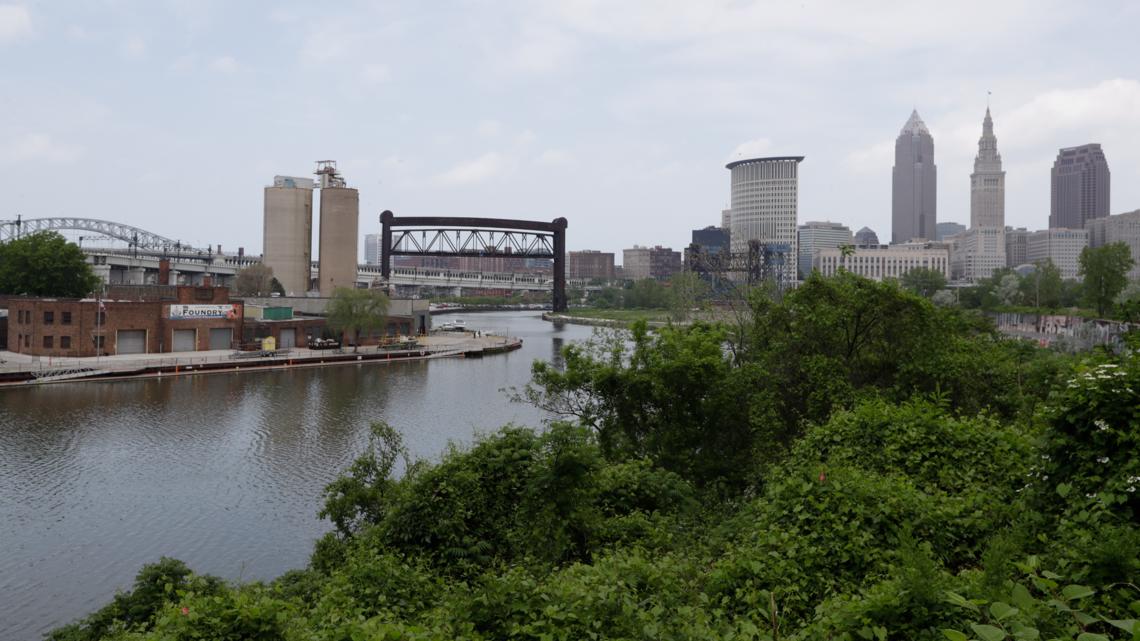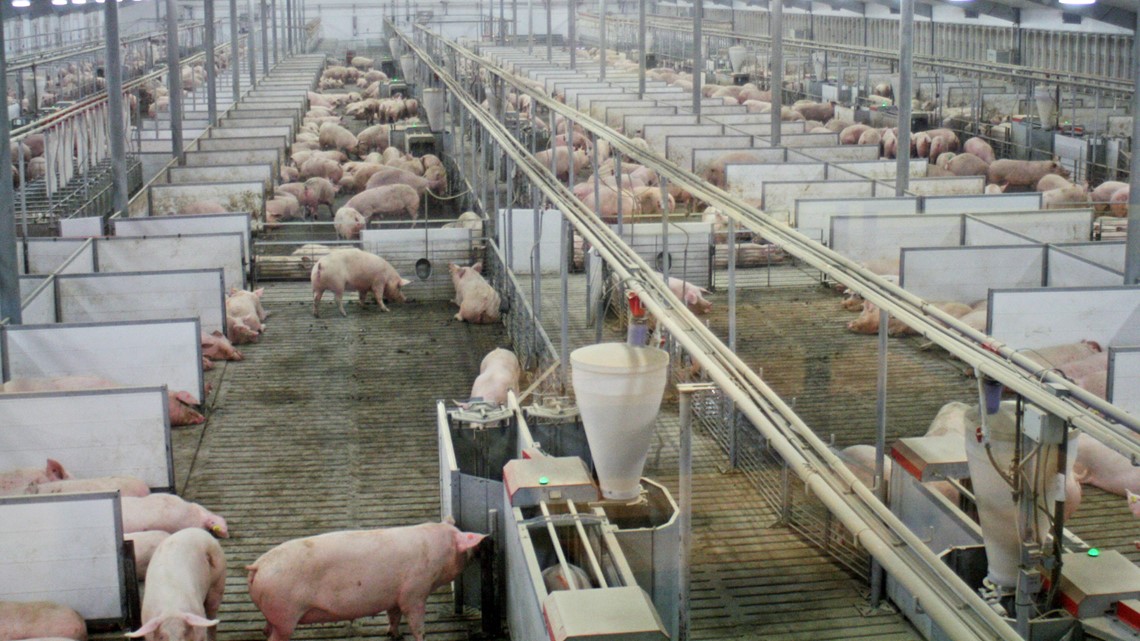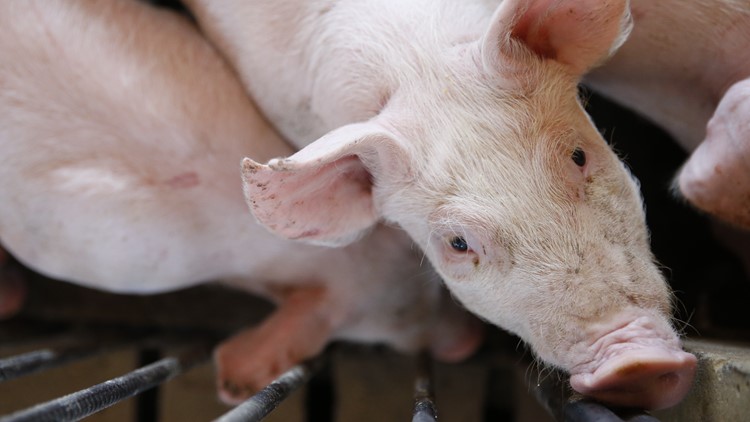INDIANA, USA — Indiana tops the list of states with the most total miles of rivers and streams classified as impaired, or too polluted for swimming and water contact recreation, according to a report released by the Environmental Integrity Project.
The report was released 50 years after the Clean Water Act — legislation passed in 1972 that aimed to make all waterways in the United States swimmable and fishable within 10 years — went into effect.
It was motivated in part by a succession of disasters on American waterways in 1969. The Cuyahoga River, slick with oil and crud from nearby industrial facilities, caught fire for perhaps the 13th time in recorded history. Lake Thonotosassa in Florida suffered the largest fish kill ever recorded, when 26 million fish were killed because the water was contaminated by four food processing plants. Multiple rivers in the eastern United States reeked of thick sewage come summertime.


"You could smell the Potomac on most days in the summer. The White House used to close all the doors and windows whenever they had international visitors come in, even on nice days, because the reek was so embarrassing. Now, it's a big bass fishery," said Eric Shaeffer, executive director with the Environmental Integrity Project, a nonprofit organization advocating for stronger enforcement of environmental laws in the United States.
Environmental advocates say there have been significant strides in the overall health of U.S. waterways since that legislation was passed. Fifty years on though, the report shows the country is far from meeting goals first laid out by the Clean Water Act.
More than half of all the studied lakes, streams, rivers and reservoirs in the United States are so polluted they are classified as "impaired."
The group analyzed water data each state reported to the United States Environmental Protection Agency to get those results.
Indiana has more miles of streams and rivers that are too polluted to swim in than any other state in the country.
A total of 24,395 total miles of rivers and streams were listed as impaired for swimming and recreation. Nearly all of the state's reservoirs and lakes are unfit for drinking water.
The top pollutant in Hoosier waterways is E. coli, a bacteria that lives in the gut of both animals and humans, that can cause gastrointestinal distress in people, and toxic blue algae outbreaks that kill wildlife connected to Hoosier waterways.
"The large amounts of manure that are produced by the livestock industry in Indiana contribute to the 73% of E. coli in our rivers and streams that are impaired — and those are rivers and streams that aren't safe for swimming," said Indra Frank, who is the environmental health and water policy director for the Hoosier Environmental Counsel.
Those insights point to a familiar culprit.
"A lot of those impaired waters are in rural areas, where really the only likely source of the pollution that is making the water unswimmable is agriculture," Schaeffer said.
Local environmental advocates and researchers have long tried to stress that lack of oversight into Hoosier agricultural practices, especially regarding industrial large scale farming operations where animal manure can slip into the water, are harming Indiana water sources.
In 2018, a study released by the Hoosier Environmental Council found Indiana's livestock produce as much urine and feces as 87 million people — about 14 times the state's total population.
The report released Thursday similarly found animal waste from large factory farm operations are a major factor behind Indiana's waterways woes.
"The problem is not the classic family farm where you grow some crops, you raise some animals — basically rotate crops. And, you end up with a pretty balanced ecosystem that you can manage. That, traditionally, has really not been a pollution problem. We're really talking about factory farming, and those hogs and the poultry in Indiana," Schaeffer said.
Most recent data from the United States Department of Agriculture shows 516 Indiana operators sold an estimated 10.3 million hogs and pigs in 2017. That means the average output from each of those farms averaged about 20,000 hogs and pigs per year.
That's illustrative, Schaeffer said, of the type of animal waste pollution these facilities where animals are crammed inside such a small space are capable of generating.


"If you want to put it into perspective, a hog will generate 10 times the waste that a person will. If you've got a site that's raising 1,200 hogs, you need to imagine a city of 120,000 people generating waste," Schaeffer said. "Some of that waste can be absorbed as fertilizer. But again — too many animals, too little land, not enough space to take all that and actually use it. And the excess gets washed into rivers and streams and lakes."
Across the U.S., Indiana was the fifth-largest producer of hogs in 2021, according to the U.S. Department of Agriculture.
Animal manure is not the only type of pollution affecting Indiana waterways. Federal and state regulators have a more difficult time enforcing nonpoint sources of pollution, like fertilizer or runoff, in general. That's due to a loophole in the Clean Water Act, which makes big exemptions for agriculture pollution sources.
"The Clean Water Act has gaps that allow manure and agricultural chemicals to run off into our waterways. But it also has permitting gaps that currently are allowing coal ash contaminants to be pumped into waterways," Frank said.
But federal legislators already tried to put limits on CAFOs 50 years ago, by designating those operations as point-source pollutants, or pollution sites stemming from one specific source. A permit program was supposed to put limitations on the amount of discharge coming from those locations, but Schaeffer said enforcement at these operations is often lax.
"We have really failed to follow that statutory direction and make that permit program work," Schaeffer said. "Some of these issues you would need legislation to fix for these big livestock operations."


A bill filed by Senator Rick Niemeyer (R-District 6) at the beginning of the 2022 legislation session which would have implemented mandatory annual inspections of CAFOs in Indiana did not receive a hearing.
Schaeffer said most of Indiana's factory farms are also under contract, so big companies like Tyson, Carjill Meat Solutions and JBS will put directives on how animals are raised in ways that exacerbate pollution problems at their facilities without actually handling it.
"They'll set the price. They'll come and pick the horns up. But the big companies don't deal with the waste problem. They leave that behind, and that's something that we really need to change," Schaeffer said.
Meanwhile, spokespeople with the Indiana Pork Association claim their organization gathered data which shows pork farmers today use 78% less land, 41% less water and have a 35% smaller carbon footprint per pound of pork produced compared to 50 years ago. 13News could not independently verify those numbers.
Schaffer noted the state of Indiana also monitored more of its rivers and streams than other states, so it is possible other states could have more pollution.
While Indiana came in first among all states for most polluted streams and rivers in the country, the state falls to the 11th spot when accounting for percentage of those rivers reported.
Indiana Impaired Water Statistics
Rivers and streams
- 73% of miles impaired for water contact recreation
- 63% of miles impaired for fish consumption
- 34% of miles impaired for aquatic life
Lakes and reservoirs
- 99% of acres impaired for drinking water
- 66% of acres impaired for aquatic life
- 49% of acres impaired for fish consumption
- 23% of acres impaired for water contact recreation


